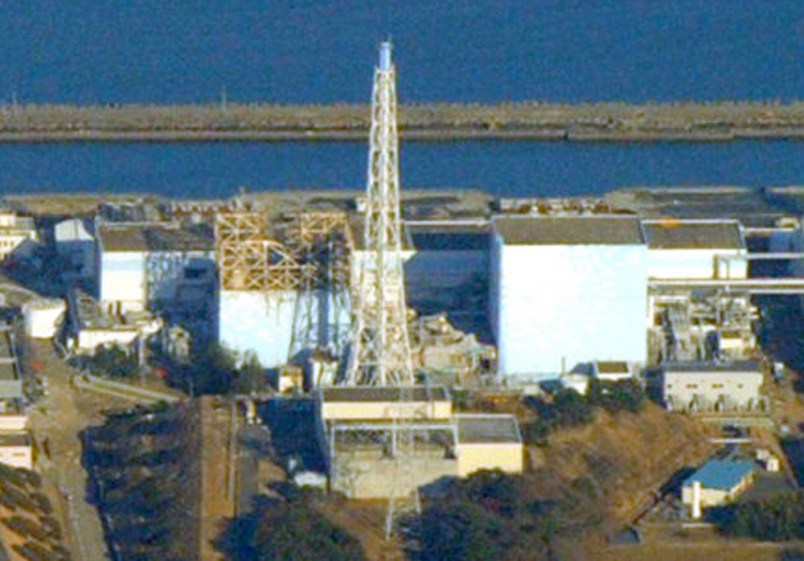Adrian Covert | Gizmodo
Since the Japan earthquake hit, it seems like the story surrounding the Fukushima Nuclear Power plant has changed every 10 minutes, making it tough to keep up on the latest developments. Luckily there’s no shortage of informed individuals and organizations keeping track of what’s going on.
While the situation regarding the reactor explosions is still very serious, the general consensus seems to be that there’s little threat of radiation exposure outside the nuclear reactor containment structures, and that any radiation emitted so far hasn’t been severe. But many have also gone to great lengths to explain the general science behind the nuclear reactors. Here’s the information you need from people who know…
BBC has a good visual breakdown of the Fukushima plant.
Blogger Jason Morgan reached out to Dr. Josef Oehmen, a research scientist at MIT, who explained the fundamental components of the nuclear reactor core:
The plants at Fukushima are so called Boiling Water Reactors, or BWR for short. Boiling Water Reactors are similar to a pressure cooker. The nuclear fuel heats water, the water boils and creates steam, the steam then drives turbines that create the electricity, and the steam is then cooled and condensed back to water, and the water send back to be heated by the nuclear fuel. The pressure cooker operates at about 250 °C.
The nuclear fuel is uranium oxide. Uranium oxide is a ceramic with a very high melting point of about 3000 °C. The fuel is manufactured in pellets (think little cylinders the size of Lego bricks). Those pieces are then put into a long tube made of Zircaloy with a melting point of 2200 °C, and sealed tight. The assembly is called a fuel rod. These fuel rods are then put together to form larger packages, and a number of these packages are then put into the reactor. All these packages together are referred to as “the core”.
(And for what its worth, Oehman thinks the chance of a full-scale meltdown occurring is slim.)
Boing Boing breaks down the reaction process:
The fission reactions that happen are all about proximity. In a fuel rod, lots of uranium atoms can crash into each other as they break apart. Pack the fuel rod into an assembly, and lots more atoms can affect one another-which means the reactions can release more energy. Put several fuel assemblies into the core of a nuclear reactor, and the amount of energy released gets even higher.
Proximity is also what makes the difference between a nuclear bomb, and the controlled fission reaction in a power plant. In the bomb, the reactions happen-and the energy is released-very quickly. In the power plant, that process is slowed down by control rods. These work like putting a piece of cardboard between two Jenga towers. The first tower falls, but it hits a barrier instead of the next tower. Of all the atoms that could be split, only a few are allowed to actually do it. And, instead of an explosion, you end up with a manageable amount of heat energy, which can be used to boil water.
PopSci broke down the safety systems normally found in nuclear power plants:
At the onset of the earthquake, the plant automatically shut down the fission process, which normally would leave the coolant system–both the main one and a backup generator–still operational. But the tsunami wiped out power to the plant, which took down the main coolant system, and a wave destroyed the diesel-based backup system. Even though the fission had stopped, coolant is still very much required to keep the plant safe.
That’s due to the heat that remains in the nuclear core, both from the recently-disabled but still-hot fuel rods and from the various byproducts of the fission process. Those byproducts include radioactive iodine and caesium, both of which produce what’s called “decay heat”–essentially residual heat that very slowly dissipates. If the core isn’t continuously cooled, there’s still enough heat that can still cause a meltdown even after it’s been “turned off.”
Al Jazeera shows us what would happen in a worst case scenario if a meltdown were to happen:
The NY Times also has a great interactive graphic breaking down the automatic shutdown system and meltdown threat.
The Atlantic clarifies the meaning of the term “meltdown” as it has been used in relation to the Fukushima power plant:
Of immediate concern is the prospect of a so-called “meltdown” at one or more of the Japanese reactors. But part of the problem in understanding the potential dangers is continued indiscriminate use, by experts and the media, of this inherently frightening term without explanation or perspective. There are varying degrees of melting or meltdown of the nuclear fuel rods in a given reactor; but there are also multiple safety systems, or containment barriers, in a given plant’s design that are intended to keep radioactive materials from escaping into the general environment in the event of a partial or complete meltdown of the reactor core. Finally, there are the steps taken by a plant’s operators to try to bring the nuclear emergency under control before these containment barriers are breached.
In the Three Mile Island accident, a partial core meltdown occurred in one reactor unit but remained largely within the plant’s containment barriers and little radiation was released to the environment. The Chernobyl catastrophe, however, resulted in a massive environmental release of radiation following a core meltdown. An important distinction is that the Chernobyl plant lacked crucial containment structures found at the Three Mile Island and Japanese plants.
According to the International Nuclear and Radiological Event Scale, which rates the severity of nuclear power plant incidents on a scale from zero to 7, Chernobyl was rated a 7, the highest level of severity and the only such accident. Three Mile Island was ranked a 5, “an accident with wider consequences.” Thus far, the Japanese nuclear emergency at Fukushima Daiichi has been rated a 4, an “accident with local consequences,” but this is of course a preliminary estimate.
New Scientist tells us about the health risks involved with nuclear radiation exposure:
Apart from the damage caused by fires and explosions, accidents also release radioactive materials which can cause radiation sickness. Radiation exposure above a certain threshold, usually only received by workers and emergency teams in a stricken plant, causes acute radiation syndrome within hours of exposure. Depending on the dose of radiation this ranges from skin rashes, vomiting and diarrhoea, to coma and death.
Radiation damages DNA, especially as it assembles in dividing cells. That means tissues which contain many dividing cells, such as the gut lining, skin and bone marrow, are most at risk of damage. High enough doses also damage brain cells and such doses are invariably fatal.
Less severe damage can be treated, however. Gut damage disturbs fluid balance and can lead to blood infection; marrow damage means no blood cells are produced for clotting and fighting infection. If those problems can be managed, people can be kept alive long enough for gut and marrow to regenerate. A cloned human hormone that boosts white blood cell production sometimes helps; there is little else.
Brave New Climate has a diagram of the Fukushima reactor design, with an timeline of events provided by a confidential industry source:
Likely timeline of incident is:
a. Reactors 1, 2 and 3 were in operation at Fukushima Daiichi nuclear power plant when the earthquake struck.
b. all three reactors were shut down and control rods were inserted when earthquake struck.
c. Cooling was maintained to remove decay heat
d. decay heat drops rapidly on reactor shut down (e.g a 3GW reactor will reduce to 200MW decay heat after 1s and 50MW after 1 hour… But takes long time (3-6months!) to reduce to negligible levels)
e. sometime (â1hr) later tsunami struck and mains power was lost to coolant circuit on Unit 1
f. Diesel generators also failed when tsunami hit so cooling was run by backup batteries for 7-8 hours
g. Other emergency diesel generators brought in but insufficient to run pumps
h. loss of coolant leads to fuel rods no longer being cooled by two phase flow (it is a Boiing water Reactor) and eventually get hot enough to recat with steam to produce Hydrogen.
Our own Kyle VanHemert looked into how bad the radiation leaks really are:
While it could get really bad really fast if one of the reactors themselves were to crack open-a full meltdown would release significant amounts of radioactive elements like iodine-131 that disperse rapidly in air and water, greatly increasing the chances for birth defects, thyroid cancer, and other problems-health experts are currently cautiously optimistic. As of this weekend, radiation levels in the plant’s control room were 1,000 times higher than normal but only eight times above normal in areas surrounding the plant. According to Ron Chesser, director of the Center for Environmental Radiation Studies at Texas Tech University, both of those levels are technically safe for humans, who absorb an average of 360 millirems of radiation per year from cosmic rays and manmade sources. Still, three elements in particular- iodine-131, strontium-90 and cesium-137-are worrisome because they mimic substances found naturally in the body.
Treehugger puts the obvious into clear terms–nuclear power plants can’t explode like bombs:
Thankfully, it is physically impossible for a nuclear power plant to explode like a nuclear bomb. It simply doesn’t have the right kinds of materials: A fission bomb uses highly enriched uranium or plutonium (90%+ of U-235 or Pu-239), while a nuclear power station generally uses Uranium that is only enriched to around 5% (sometimes up to 20% in smaller research reactors). A nuclear power station also lacks all the other mechanisms that are necessary to create a nuclear explosion (like for example the implosion or gun-type assembly configurations that allow supercritical mass to be reached).
The original version of the story appears here: http://feeds.gawker.com/~r/gizmodo/vip/~3/pMTtsYocDu4/everything-you-need-to-know-about-the-fukushima-power-plant-and-nuclear-reactions
Gizmodo is dedicated to gadgets, gizmos, and cutting-edge consumer electronics. Its tech-hungry audience stops by frequently to check out the newest products and recommendations for laptops, cell phones, PDAs, digital cameras, home entertainment, and other shiny new toys. Widely viewed as an authority in tech media, Gizmodo publishes breaking news and reviews 60 times per weekday.











